In the 1930’s, a white telephone was a luxury item and a symbol of opulence. This visual status symbol indicated great wealth and represents an era of Italian filmmaking focused on the glamorous lives of those who could afford such an ostentatious technology1. The aesthetic of these films revolved around lush settings and grand, splendid worlds in which the rich struggle with marital conflicts and other cultural attitudes. While occasionally perceived as satire of the upper class, most often these films are remembered as being “escapist” and distractions from the plight of the lower classes2. In some cases these films are viewed as the precursor to the late 1940’s era of fascist propaganda3. While upholding the idealistic notions of family and religion, these films failed to portray any wider social or class conflicts, and did not represent realistic Italian daily life. In fact, these films were so off-base from what the average Italian experienced that they inspired the reactionary movement of neorealism, which became known for its authentic war-time themes, non-actors, and local settings, the antithesis of the grandeur and romanticism of the white telephone features.
“T’amero Sempre” (I Will Love You Forever) is a 1933 romantic comedy/drama which depicts this Hollywood-inspired set and costume design. At 29:15, notice the other signifiers of wealth such as the electric curlers and the stylish women’s fashion.
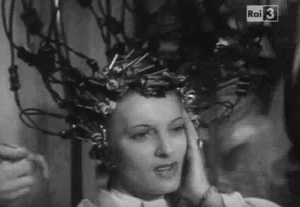
At 30:13, the maid even goes to answer a white telephone.
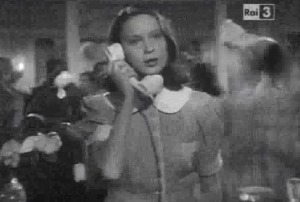
At 31:15, notice the elaborate set detail, including the flowers, bust, easel, and light design, as well as the rich-looking satin robe and tailored suit costumes.
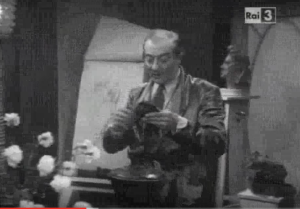
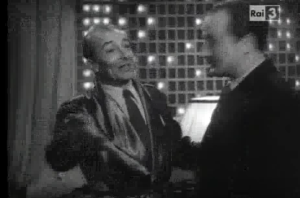
https://youtu.be/ldrLD2D9rI8?t=1755
“La Signora Di Tutti” (Everybody’s Woman) from 1934 is another example of a film which aesthetically imitated Hollywood and visually distracted audiences with notions of a plush and romanticized life.
It tells the melodramatic story of a fictionalized famous film-star played by the actual famous film-star Isa Miranda. There is beautifully designed choreography as well as similarly displayed symbols of wealth and status, especially concerning Miranda’s character Gaby Doriot.
The luxe costumes and fashionable make-up and hair were definitely more representative of Hollywood than they were of the general Italian public (see below a 1930’s Modern Screen magazine cover and the film poster for “La Signora Di Tutti”).
The advertisement for “T’amero Sempre” also mimicked the similar style and characterizations as exemplified on Hollywood posters from the same time.
As for one last point of comparison, look at the distinct differences between the portrayals of the characters on a neorealism-era film’s posters such as “Roma Citta Aperta” (Rome Open City). Notice the tonal shift in just the way the film is advertised, as evidence of the separate, darker coloring scheme and more raw, emotional characterizations.
- Landy, Marcia. (1986). Fascism in Film: The Italian Commercial Cinema, 1931-1943. Princeton: Princeton University Press, p. 230.
- Landy, Marcia. Fascism in Film, p. 273.
- Reich, Jacqueline and Piero Garofalo.(2002). Reviewing Fascism: Italian Cinema, 1922-1943. Bloomington: Indiana University Press, p. 142.

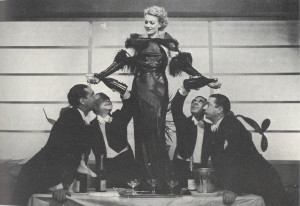
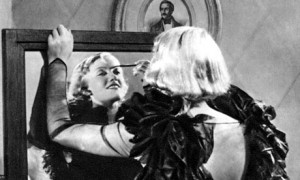
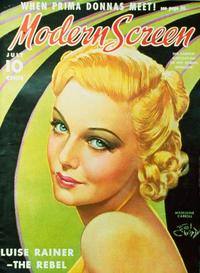
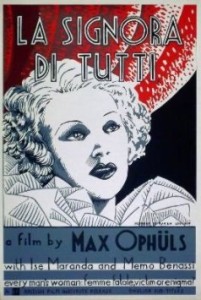
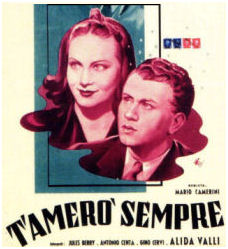
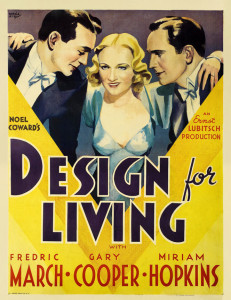
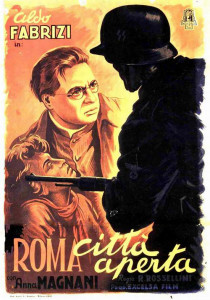
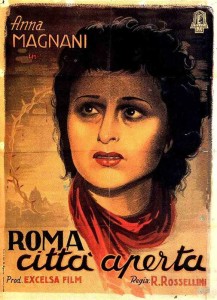
5 Comments. Leave new
[…] Telefoni Bianchi (Italian ‘White Telephone’ Films of the 1930’s) […]
meow
This is a great Post. You’ve done a great job introducing an aesthetic that I have definitely seem but never heard classified specifically. The thurough content and comparisons leave mo doubt that the white telephone is indeed an aesthetic. This post is exemplary of what the asdignment called for and I would encourage others to benchmark their work against this. There were some other posts that I would question whether were actually an aesthetic, which would have needed the same level of background to validate.
What has the white telephone evolved into today?
Interesting subject! I knew films in the 1930’s had a decent amount of romanticism and plots revolving around the wealthy but I had no idea the white telephone was a symbol of the upper class. It’s really interesting how White Telephone films influenced not only the more dramatic and darker neorealism, but also fascist propaganda films. It’s crazy how films have such a huge impact on society.
Very interesting to be able to see what made this particular movement of films popular. You mentioned that these films were the precursors to fascist propaganda films of the 1940’s. Did the propaganda tend to work with the same aesthetic in a positive or negative light? I could see how this aesthetic could be appealing to a post WWII era Italy as an escape, but could also see how a government may try to shame the idea of living in excess after a major war.
It would have been interesting to see how this movement would have utilized color film. It seems like the movie posters serve as a way to establish the colors a director may want associated with his or her film before the reel has even started playing. Thanks for sharing!